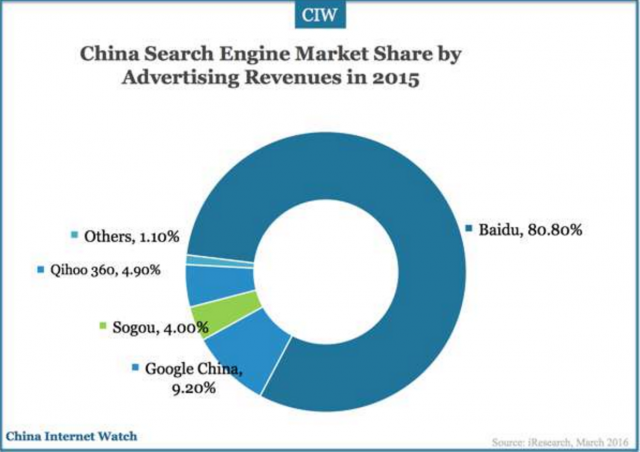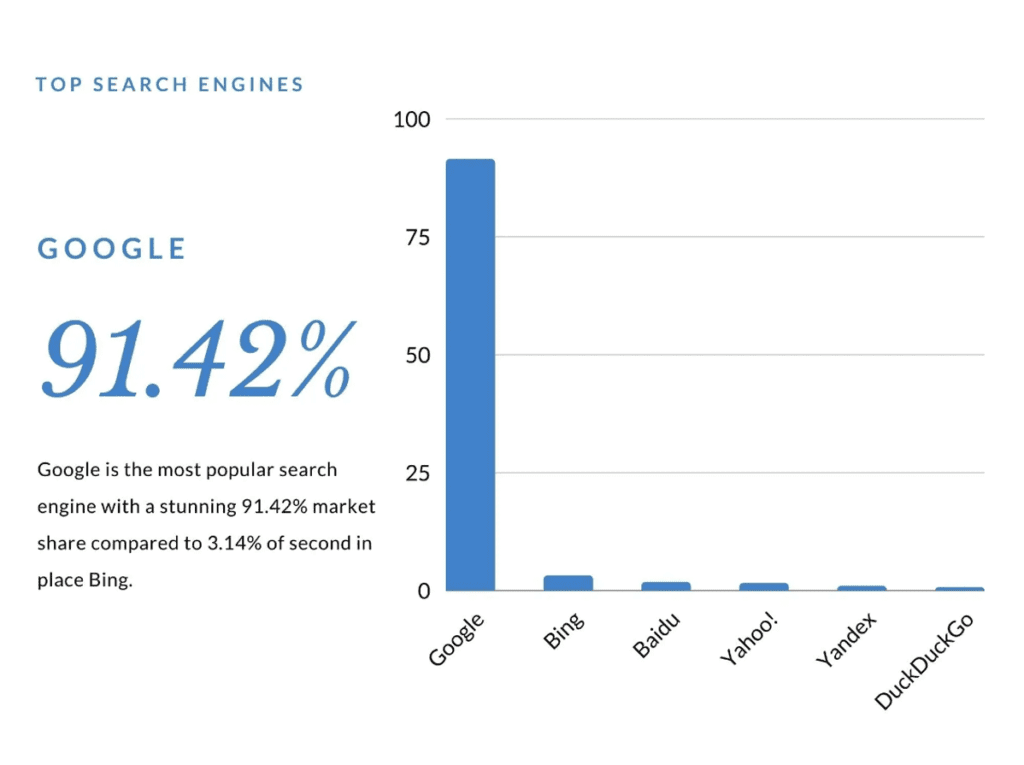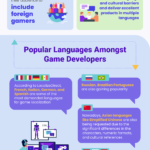Listen to the article
Expanding internationally is a tried and tested growing strategy for many businesses, especially in the gaming industry. However, when deciding to target foreign audiences and enter new markets, you need to think about localizing not just the game itself, but also its marketing. And we are including here both your overall marketing strategy and your marketing content for the specific locale.
Because not paying enough attention to the culture and preferences of your new customers is the biggest mistake you can easily make. The result? Missing out on significant opportunities results in lost users, fewer fans, and ultimately, lower sales.
What is content localization?
Marketing content localization is the process of taking content that you’ve produced for your primary market and adapting it for your new target market. Even if at the first glance you might that translation is enough, the process is more complicated and involves more aspects.
Why marketing content is important
First, because you need to be significant to your target market. This means adapting not just your product to fit your new customers’ needs, but also the message you convey and the way you communicate with them.
The more relevant the information is to potential customers, the more likely they are to take the desired action – play/download/buy your game, etc. And presenting information in their native language is the first step.
Besides, to win over users, you have to “sound like them”. And this means localization – adapting your messages to your new target market considering their norms and cultures.
If we take a closer look at the statistical data, localizing content also makes commercial sense. A 2020 study by the Common Sense Advisory, found that:
- 40% of respondents say they won’t buy from e-commerce websites in another language
- 65% prefer content in their own language
- 73% want to read product reviews in their own language.
- 30% stated they’ll never buy from English-only websites, and another 30% say they do so only rarely.
Moreover, the same study shows that local-language support creates stronger and long-lasting customer relationships, as 75% of respondents say they’re more likely to buy the same brand again if client service is in their language. Even if this preference is strongest among those with less English competencies, still 60% of those who are most confident in reading English favor having customer support in their own language.
In short: having a content localization strategy is vital for your business if you want to expand in foreign markets.
10 best practices to consider when you tackle marketing content localization
What content should you localize? The answer is simple: all the content that helps you to advertise your video game – from your website to social media accounts, social media posts, ads, app store presentation, visuals, print materials, user guides, etc.
Where to begin? Let’s break it down step by step:
#1 Understand your best-performing markets
Just like when you develop your game localization strategy, your marketing content localization should start by drawing up a list of your most important markets. This means that analyzing your existing international traffic is the first step.
Use Google Analytics and other SEO tools to understand which markets are already driving traffic. You’ll get an understanding of which markets to localize into, and what channels to focus on.
Understanding market prioritization will help you to plan and allocate the resources for localization.
#2 Conduct localized keyword research in your target markets
Once you know which markets to target, it’s time to conduct local keyword research. Here are the most important steps:
- don’t simply translate the existing keywords in your source language into the target one, because how your audience understands, describes, and searches for online games is likely to vary by market. By simply translating your existing keywords you might miss out on the biggest opportunities. For example, by simply translating web content localization in Japanese, you’ll have ウェブコンテンツのローカライズ; but if you localize your translation, the correct version is ウェブコンテンツのローカリゼーション“
- find out the competition level for your localized keywords so you can decide where to focus your efforts.
#3 Understand the digital landscape in your target markets
Even if Google is the most used search engine all over the world, it’s not the only one you can rely on. For example, if you target the Chinese market, you should know that Baidu is the most important search engine in China, followed by Qihoo 360 & Sogou.
When speaking about social media platforms, statistics show that each market has its own digital landscape – involving different platforms and user behaviors.
- Facebook, YouTube, Instagram, and Twitter are the most popular social media platforms in western countries with 2.9 billion, 2.2 billion, 2 billion respectively 212 million monthly active users. Therefore, if you target different markets belonging to this region, these social media networks provide you with the best opportunities to connect with the right potential gamers.
- On the other side, if you target the Chinese market, for example, you should consider that it has seen the emergence of many innovative new social platforms, with WeChat, Weibo, and Little Red Book being the most popular.
In addition, keep in mind that different search engines may require different optimization techniques, which could affect how you approach content localization.

#4 Start small with your marketing content localization – and build from there
When done properly, content localization requires a lot of time and resources. Therefore, it’s better to consider a step-by-step approach when entering new markets:
- instead of localizing everything up-front, you could start with prioritizing your target markets and approaching localization in stages: priority 1 market, then priority 2, priority 3, and so on.
- localize your website for the markets you want to expand on, as it is the most important channel you can use to interact with your potential gamers;
- you can also start analyzing your most profitable keywords and develop a paid search campaign, with links to your website
- When you can see demand, create a localized landing page, providing key information about your game
- Depending on your results, you can go further and extend your localization efforts to other marketing content and channels.
- Your budget may not allow you to localize everything, especially when you are an indie game developer and that’s perfectly ok; start with considering what will have the biggest impact in each market and be selective. Also, create your content according to each stage of the customer lifecycle – discovery, education, buying, post-buying, and advocacy.
#5 Decide what type and style of marketing content to localize

Before starting your content localization, analyze what is popular in your target markets, by answering the following questions:
- What content formats perform best for your target audience? Video? Long-form or short-form content? Or social media posts?
- What content do your main competitors publish? What’s performing well for them and what doesn’t work? Use SEO tools and some other analytics tools to provide competitive insight.
#6 Create a flexible and scalable content plan
If it’s not well planned, you may face the unpleasant situation of creating more content than is needed for one market and not enough for others. To avoid it, consider to:
- develop a realistic marketing content calendar for each market, with clear deadlines;
- design your team structure and hire people (in-house or freelancers) to create all the content according to your needs. It’s crucial to invest time to set up the marketing processes, as well as the roles and responsibilities of your team members;
- while you must pay attention to the local cultural nuances, look for similarities across markets to identify the content that can be repurposed and republished in all markets.
#7 Balance budget constraints with local expertise
No brand has infinite resources. Successful content marketing localization means generating the biggest impact possible within your budget. To accomplish this goal, you should avoid the temptation to use just automated translations. Even if machine translations have come a long way, you still need to use human translators to avoid embarrassing (and potentially expensive) mistakes.
This way, you can make sure that language, visuals, style, tone, and references are all on point.
#8 Be authentic to local audiences
Being authentic to your local potential customers means more than using the right words and phrases. When performing your content marketing localization you should also pay attention to different other elements, such as:
- imagery, how colors are perceived across cultures, check-out forms and subscription forms (taking into account that addressing formats differ), expectations, legal and regulatory issues, date and time formats, and so on.
- SEO elements that need to be localized – URLs, title tags, meta descriptions, menu and navigation elements, image alt tags etc.
#9 Prioritize SEO
As mentioned before, even if it dominates the online search world, Google is not the only search engine on the market. There are many other options available, with implications for your content strategy.
Therefore, before starting to localize your content, understand the search engine landscape in each of your target markets – not just Google but also Bing, Baidu, Yahoo!, Yandex, Ask, DuckDuckGo, Naver, and so on.
Invest your time (while also considering hiring SEO professionals) to understand the best practices for SEO for the relevant search engines.
As you localize your content, use these SEO insights to determine which keywords and key phrases you use, and how to structure your content.
#10 Promote your localized marketing content
Once you’ve localized your marketing content, you need to promote it. Otherwise, you’ll end up having a big failure. In terms of promotion, it’s always a good idea to work with local media and influencers to generate news coverage, links, and business opportunities.
Again, marketing channels vary by market, and it’s not just about Facebook, Twitter, YouTube, and Instagram. A local marketing expert can advise you on relevant methods and channels to promote your game in your target markets.
Summing Up
Marketing localization is not only about tailoring communication strategies for local users, but also about personalizing content. To remain creative, generate interest, and increase conversion, localization needs to be professional and unobtrusive.
Although adapting marketing content while respecting cultural specificities can seem a daunting task, the right localization partner can help you manage the whole process. Get in touch now and find out how SandVox can help you gain a competitive advantage when entering new markets.









